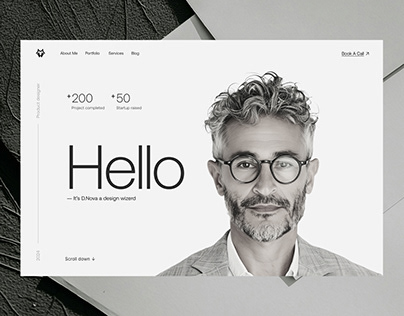Optimized Website Design Solutions for Enhanced User Interaction
Optimized Website Design Solutions for Enhanced User Interaction
Blog Article
Top Tips for Developing an Impactful Internet Site Design That Converts
In today's digital landscape, the value of an impactful web site layout can not be overemphasized, particularly when it concerns converting visitors into clients. To accomplish this, one need to take into consideration a range of variables, including comprehending the target audience, focusing on individual experience, and maximizing for mobile platforms. The tactical use of compelling call-to-actions and a well-defined visual hierarchy plays an essential role in guiding users via their trip. As we check out these necessary aspects, it becomes apparent that the success of your website hinges on even more than simply appearance; it calls for a thoughtful technique to style and performance.

Understand Your Target Target Market
Recognizing your target audience is basic to reliable internet site style, as it prepares for developing an appealing user experience. Recognizing who your customers are, including their demographics, choices, and habits, makes it possible for designers to customize the site's web content, design, and functionality to fulfill certain needs.
Performing extensive market research is vital in this process. Studies, meetings, and analytics can offer beneficial insights right into user assumptions and discomfort points. By assembling this information, designers can produce customer identities that stand for different sections of the target market, guaranteeing that layout choices are informed and appropriate.
Additionally, recognizing the target audience assists in picking appropriate style aspects such as shade schemes, typography, and imagery that resonate with customers. A website that speaks directly to its target market fosters a sense of connection and trust fund, urging longer sees and greater conversion prices.
Ultimately, a user-centered method to web site layout not just boosts user complete satisfaction however additionally sustains organization objectives by driving engagement and loyalty. By prioritizing the needs and preferences of the target audience, a site can successfully offer its function and accomplish preferred results.
Prioritize Individual Experience
To improve the general efficiency of a web site, focusing on individual experience (UX) is necessary (Website Design). A properly designed UX makes certain that site visitors can navigate the site effortlessly, find information quickly, and involve with content meaningfully. This causes boosted customer contentment and greater conversion rates
Begin by executing intuitive navigating. Menus needs to be logically structured, permitting customers to find essential areas of the website with marginal effort. Uniformity in style aspects, such as color schemes and typefaces, promotes experience, which is essential for maintaining customer engagement.
Additionally, take into consideration the packing speed of your web site. A delay of just a couple of seconds can bring about considerable drop-offs, as individuals are much less most likely to wait for a slow-loading web page. Simplifying images and maximizing code can improve efficiency and maintain visitors.
Furthermore, clearness in material presentation is crucial. Usage concise, interesting language and break up message with visuals to boost readability. By prioritizing individual experience, you not just develop a more satisfying setting for site visitors but likewise reinforce your brand name's integrity. Inevitably, a focus on UX is an investment in the long-lasting success of your site.
Enhance for Mobile Instruments
Optimizing for smart phones is important in today's electronic landscape, where a boosting variety of customers accessibility internet sites via smart devices and tablet computers. A mobile-friendly layout not only enhances user experience but also plays a significant role in boosting search engine positions. To attain this, it is necessary to adopt a responsive design that immediately gets used to various screen dimensions and alignments.

Loading speed is another essential element; mobile customers are generally much less person and expect quick accessibility to information. By prioritizing mobile optimization, you make certain that your website stays affordable and efficiently engages a wider target market.
Usage Compelling Call-to-Actions
A web site's performance usually pivots on its ability to assist site Continue visitors toward preferred actions, making compelling call-to-actions (CTAs) crucial components of design. CTAs work as the essential factors that route customers to engage with the site, whether that indicates making a purchase, enrolling in an e-newsletter, or downloading a resource.
To produce effective CTAs, clarity is paramount. Usage succinct language that clearly communicates the action you desire the customer to take.
Furthermore, the design of CTAs should stand apart without being noticeable. Employ contrasting shades and clear font styles to ensure they capture focus. Furthermore, think about utilizing directional signs, such as arrowheads or pictures, to lead customers toward these buttons. By concentrating on these components, companies can dramatically improve customer involvement, driving conversions and eventually achieving their website's objectives.
Emphasis on Visual Pecking Order
Reliable site design depends greatly on a well-structured visual power structure that guides individuals via material flawlessly. By organizing components in a fashion that focuses on information, designers can boost user experience and assist in decision-making. This involves using dimension, color, contrast, and spacing tactically to attract attention to the most crucial parts of a page.
The use of bigger font styles for headings and subheadings develops a clear distinction in between different sections, enabling customers to scan content effortlessly. Furthermore, using different shades for buttons and calls-to-action can capture individual focus and urge communication. Whitespace is another necessary part; it prevents mess and makes it possible for users to concentrate on essential messages without diversions.
Photos and graphics need to complement the text while also adhering to the recognized look at this now power structure, enhancing the total message (Website Design). Uniformity in layout components, such as color pattern and typography, further strengthens the aesthetic hierarchy, making navigating user-friendly

Final Thought
In final thought, effective internet site style necessitates a detailed understanding of the target audience, prioritization of user experience, and mobile optimization. Inevitably, a well-executed site style serves as a vital element in driving individual actions and attaining service goals.
Report this page